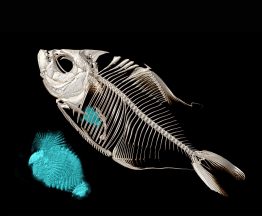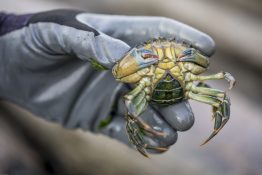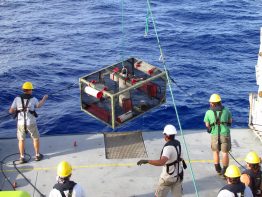A small group of fishes — possibly the world’s cleverest carnivorous grazers — feeds on the scales of other fish in the tropics. The different species’ approach differs: some ram their blunt noses into the sides of other fish to prey upon sloughed-off scales, while others open their jaws to gargantuan widths to pry scales off with their teeth. A team led by biologists at the University of Washington’s Friday Harbor Laboratories is trying to understand these scale-feeding fish and how this odd diet influences their body evolution and behavior.
Read more at UW Today »Partnership will use robotic network to explore Antarctic ice shelves
One of the biggest unknowns for the future of Earth’s climate is Antarctica, where the West Antarctic Ice Sheet holds so much ice that, if it collapsed, it could bring several feet of rising seas. A new partnership between the University of Washington’s College of the Environment, the UW Applied Physics Laboratory and Paul G. Allen Philanthropies will use a robotic network to observe the conditions beneath a floating Antarctic ice shelf.
Read more at UW Today »Loose skin and slime protect hagfishes from sharks
Researchers from the University of Washington, Chapman University and University of Guelph have published new research showing how hagfishes — an ancient group of eel-like animals found at the bottom of the ocean — survive an initial attack from predators before they release large volumes of slime to defend themselves. Results show that hagfish skin is not puncture resistant; instead, it is both unattached and flaccid, which helps avoid internal damage from penetrating teeth.
Read more at UW Today »Preventing a crustacean invasion
Washington Sea Grant’s Emily Grason and its Crab Team volunteers are on a mission to protect the Salish Sea from one of the world’s worst invasive species — the European green crab.
Read more »There's a deeper fish in the sea
Meet the deepest fish in the ocean, a new species named the Mariana snailfish by an international team of researchers that discovered it. They’re small, translucent, bereft of scales — and highly adept at living where few other organisms can. The Mariana snailfish (Pseudoliparis swirei) thrives at depths of up to about 8,000 meters (26,200 feet) along the Mariana Trench near Guam.
Read more at UW Today »





